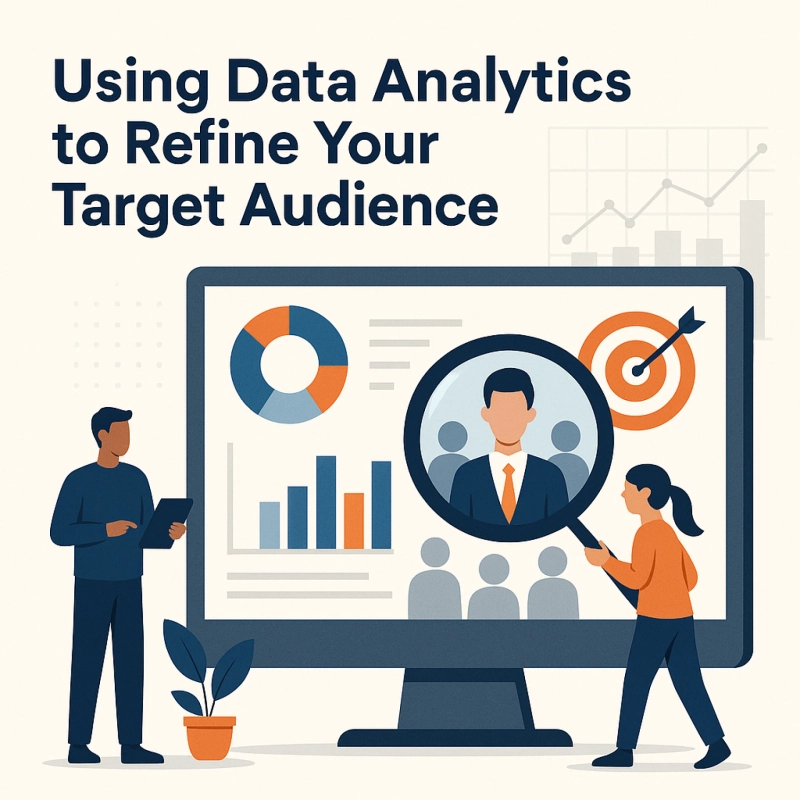Today’s marketing success depends less on guesswork and more on data. The better you understand your audience, the more effective your messaging becomes. With so much digital activity happening every second, brands now have access to an incredible volume of data, but knowing how to use it is what separates good marketers from great ones. Data analytics allows businesses to move from broad targeting to highly personalized, strategic outreach. Whether you’re fine-tuning ads, building email campaigns, or planning product launches, understanding who your audience really is can make or break your results. Here’s how analytics brings that clarity to life.
What Is Audience Data and Where Does It Come From?
Audience data is the collection of information about the people who interact with your brand. It can include demographics, location, device usage, time on page, click behavior, and even shopping history. This data comes from places like website analytics, CRM systems, email platforms, social media insights, and third-party sources. Once gathered, it’s structured into patterns and profiles that help marketers understand how customers behave. More importantly, it shows what they care about. With the right tools in place, this information becomes a foundation for smarter targeting, higher conversions, and more meaningful engagement with the people who matter most.
Segmenting for Precision, Not Just Reach
One of the key advantages of data analytics is the ability to segment your audience. Instead of targeting everyone with the same message, marketers can group users by behaviors, preferences, age, geography, or past interactions. This allows for more tailored communication. For example, someone who visited your pricing page twice but didn’t buy may need a different message than someone who downloaded a whitepaper. Proper segmentation leads to better open rates, more clicks, and higher ROI because the message feels relevant. It’s about meeting people where they are, not where you assume they are.
Real-Time Adjustments and Smarter Decision-Making
Analytics isn’t just about looking backward. With real-time data tracking, marketers can make adjustments on the fly. If a campaign isn’t performing well with a certain audience segment, changes can be made immediately, whether it’s tweaking headlines, adjusting ad placement, or shifting budget. This kind of agility wasn’t possible in traditional marketing. Now, dashboards update live, showing impressions, bounce rates, conversion paths, and more. This helps teams move quickly, fail fast if needed, and double down on what’s working. It takes the guesswork out of strategy and replaces it with evidence-based decisions.
Using Analytics to Safeguard Targeting Integrity
As marketers rely more on data, protecting that data becomes critical, not just for privacy, but for accuracy. Sometimes, campaign performance suffers not because the message is wrong, but because the data has been manipulated or corrupted. Some companies use threat intelligence to monitor for suspicious patterns like sudden traffic spikes from bots or false data inputs that can throw off targeting metrics. Just as it helps cybersecurity teams stop breaches, threat intelligence also helps marketers keep their analytics clean, ensuring they’re making decisions based on real behavior, not noise.
Behavioral Patterns That Guide Campaign Design
By examining behavioral trends, like how users navigate your website or when they open emails, marketers can make smarter creative choices. Do users convert more on mobile than desktop? Are they spending more time on video or blog content? These patterns help refine not just targeting, but messaging, design, and even timing. For instance, if users tend to open emails on Monday mornings, campaigns can be timed accordingly. Analytics helps you understand not just who your audience is, but what they respond to. It’s like having a behind-the-scenes look into your customer’s decision-making process.
The Long Game: Turning Data Into Loyalty
Refining your audience is about more than getting attention. It’s about building trust over time. When customers consistently receive relevant, thoughtful messaging, they feel understood. This creates a stronger connection, making them more likely to return, recommend, or even become brand advocates. Analytics allows you to personalize follow-ups, reward loyalty, and predict future needs based on previous behavior. And it’s not just about sales. Customer lifetime value increases when people feel seen. With data as your guide, you’re not just finding your audience; you’re keeping them.



